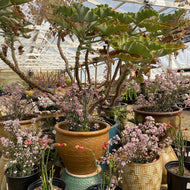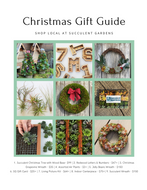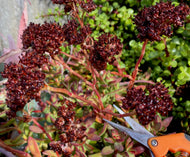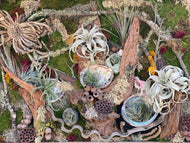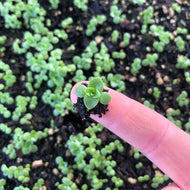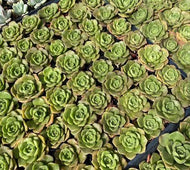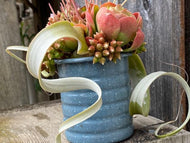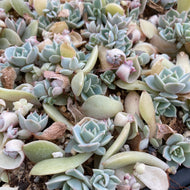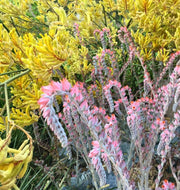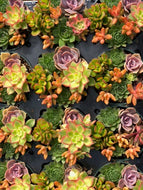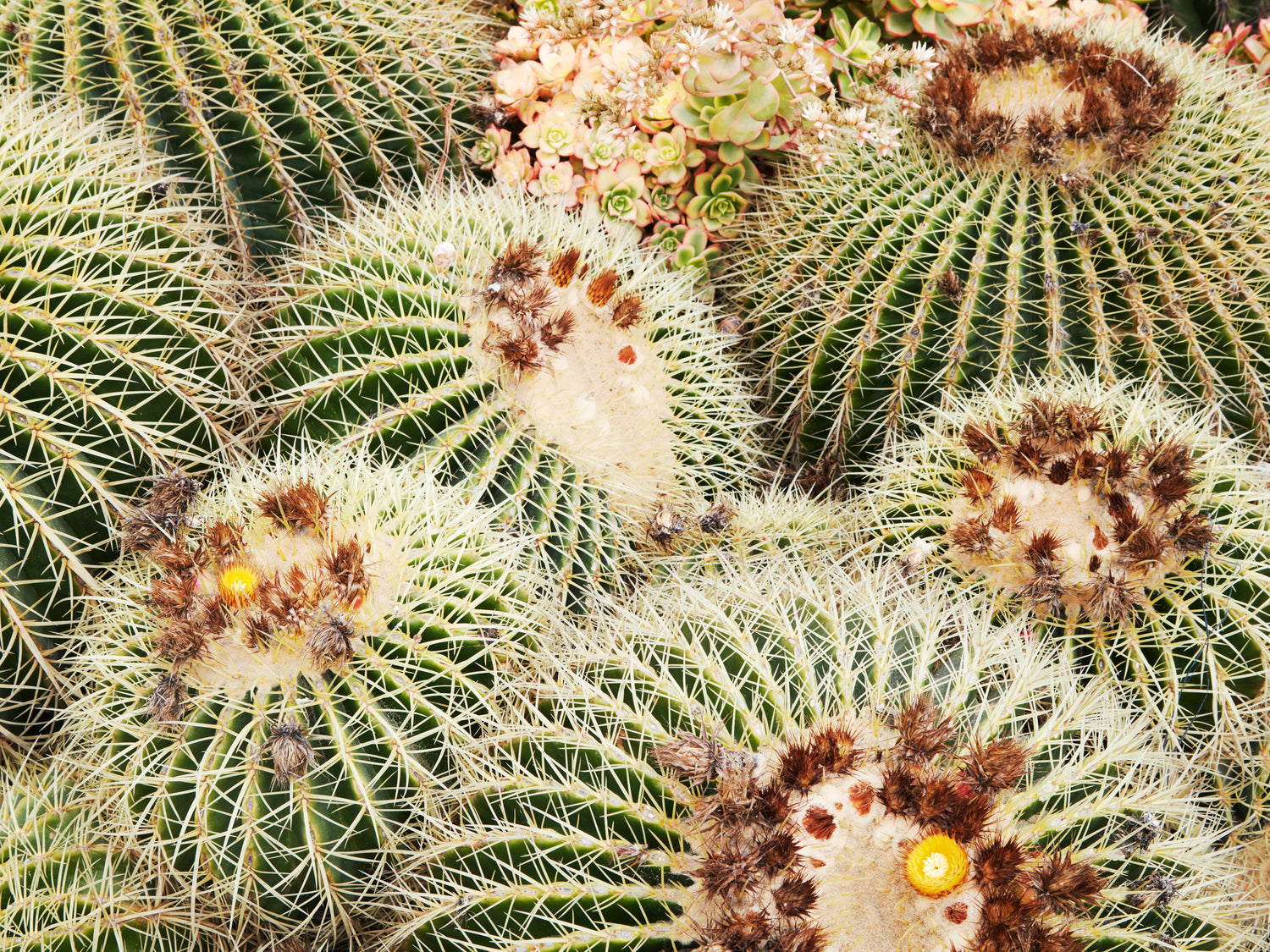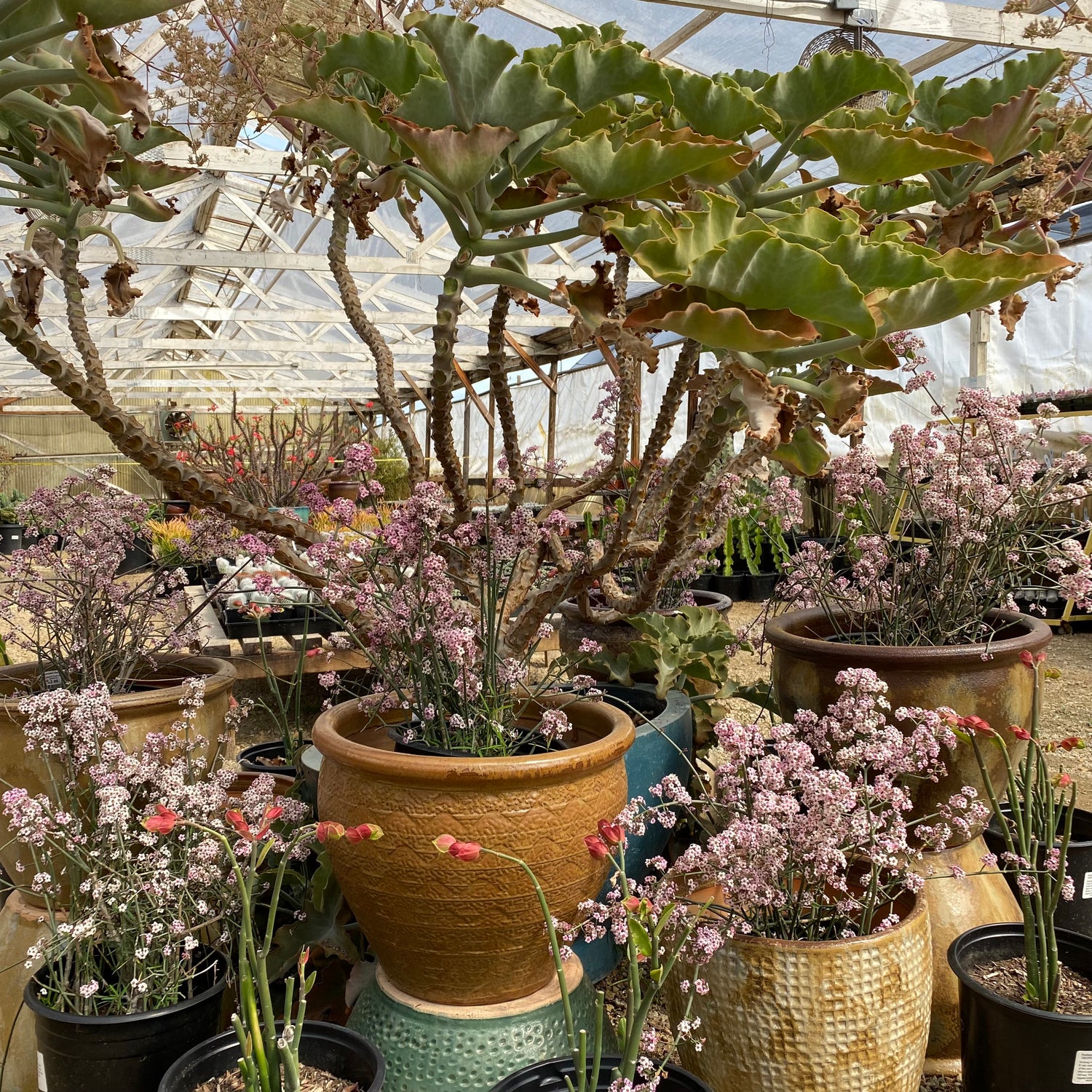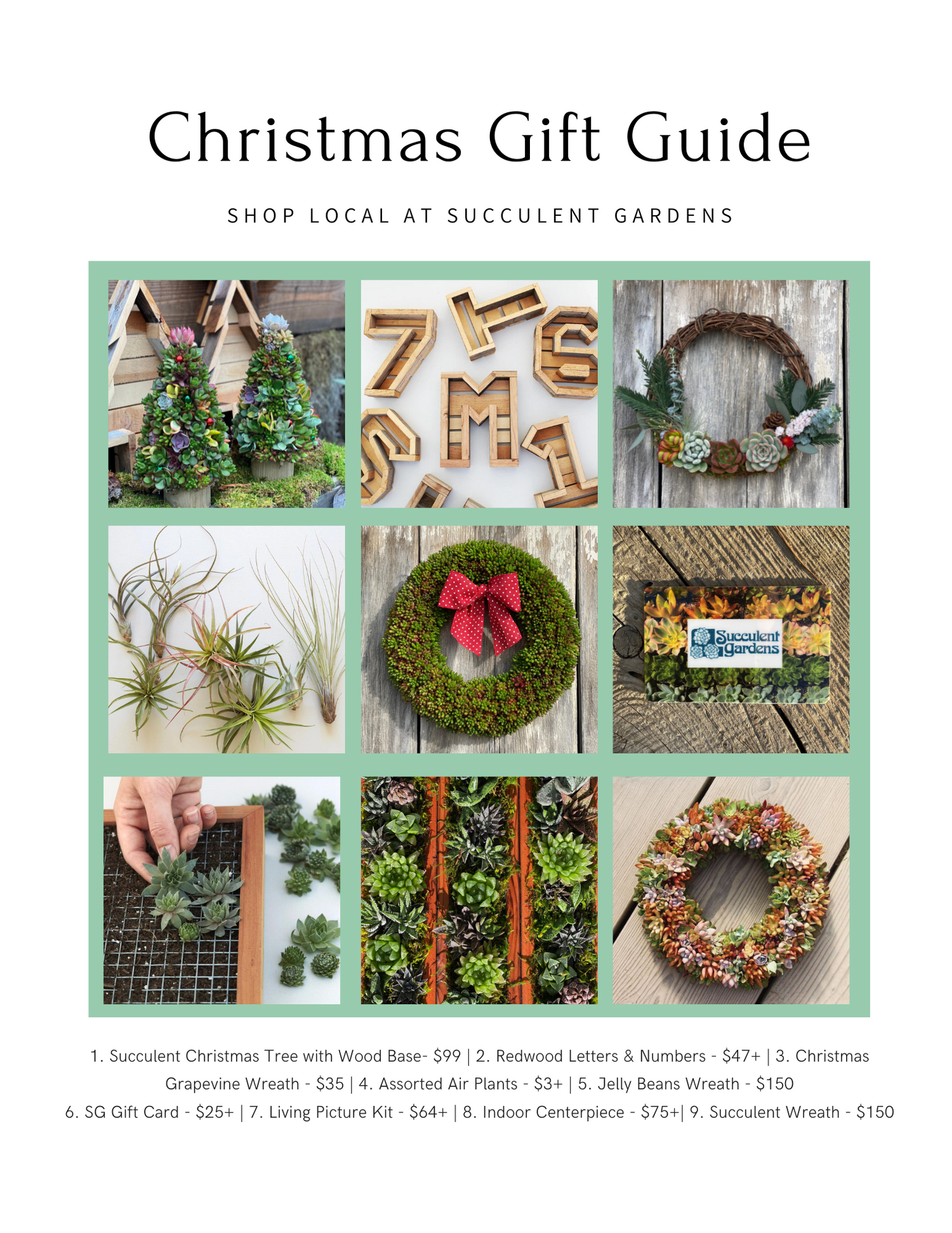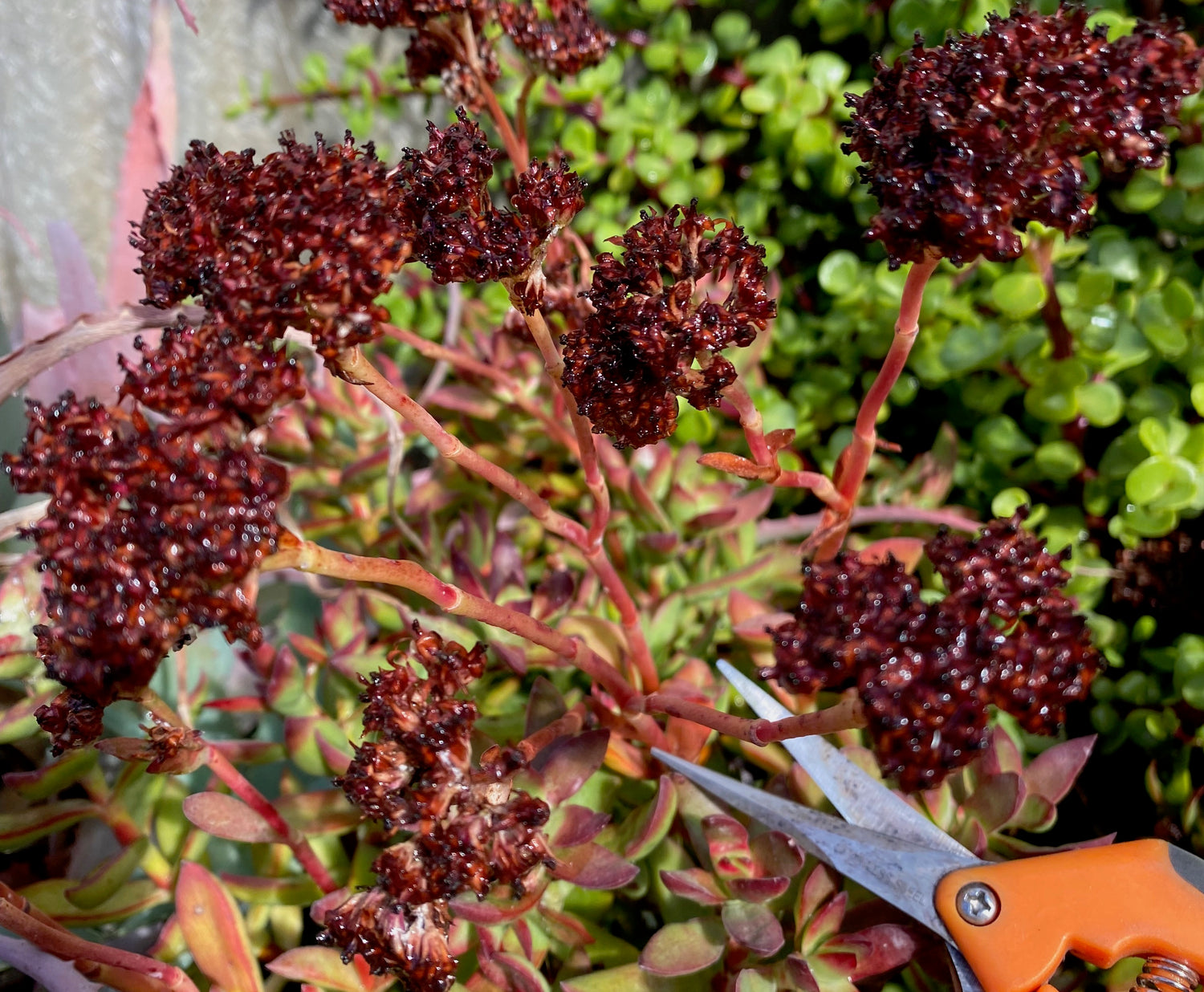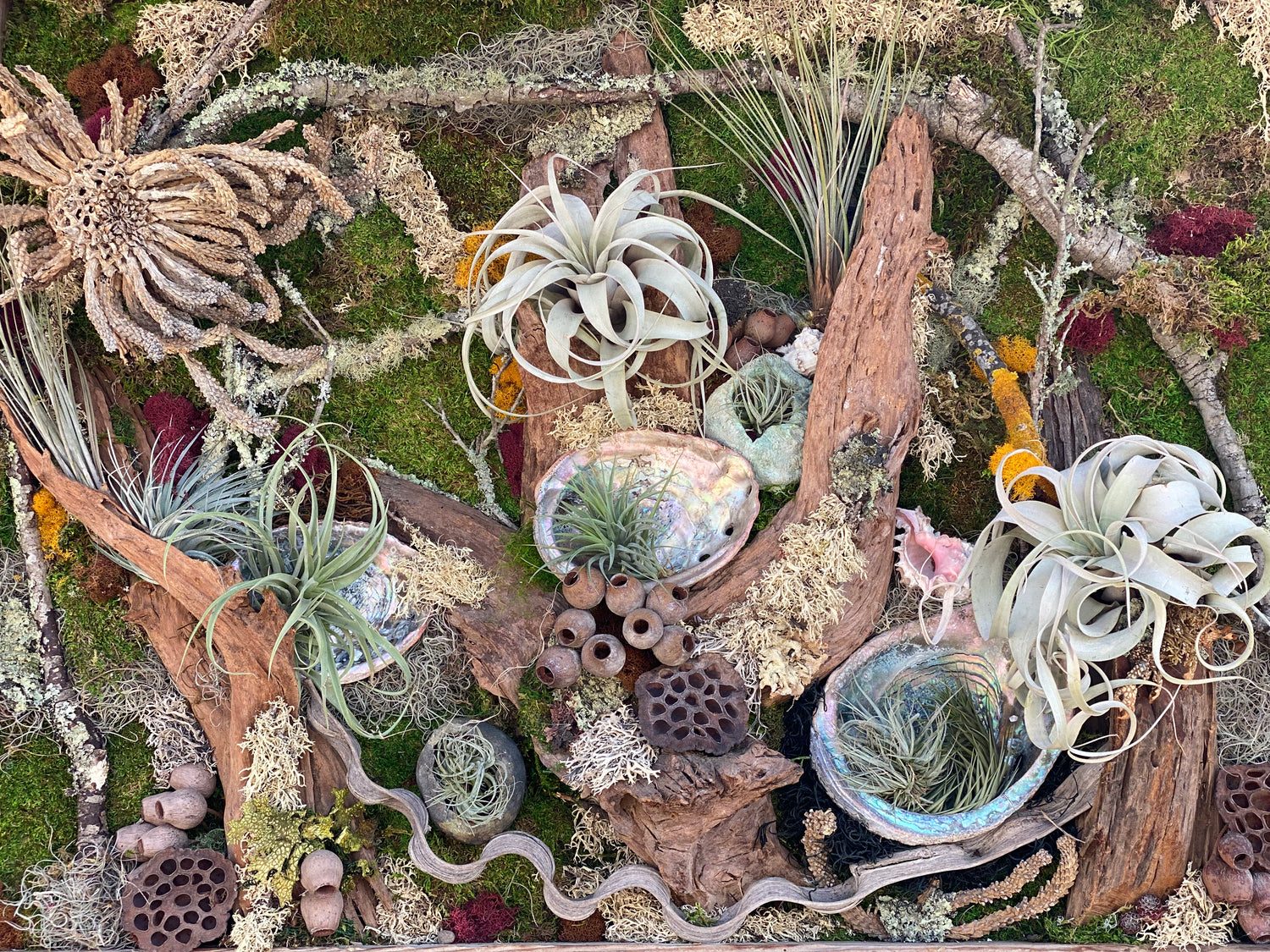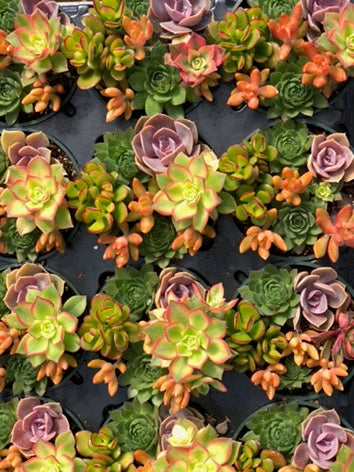Succulents are typically grown for their year-round vibrant colors and interesting textures, but their flowers can provide seasonal interest as well! With a little planning, you can enjoy year-round blooms in your succulent landscape by choosing plants for their flowering time. The key is diversity in genera.
While succulents can bloom at different times depending on your climate, most succulents and cacti bloom at approximately the same season no matter where you live on the globe.
Below we've listed a few of our favorite bloomers here at Succulent Gardens. The following is a breakdown of blooms by season:
Spring
(Below) Dudleya bloom from early spring to late summer. Their brilliant pink peduncle (inflorescence stalk) is a show stopper in the rock garden. Bees love their yellow flowers! Be sure to save their flowers as Dudleya are easy to grow from seed.

(Below) Delosperma 'Garnet' provides a bright, dense mat of flowers to any landscape.

(Below) Oscularia deltoides is a fast-growing ground cover that blooms several times a year. We love it for the silvery-blue foliage contrasted with purple stems and lavender flowers.

(Below)Sedum pachyclados is most adored for it’s scalloped margins that look like tiny cabbages. The white flowers on this small clumping Sedum are a great addition to container gardens.

(Below) Sedum dasyphyllum ‘Fuzzy Wuzzy’ produces a show of dainty flowers just a few inches off the plant creating a sweet white halo.

Aeonium bloom in early spring through the summer, providing pollinators with a pollen source for months at a time. Aeonium canariense and A. undulatum have a large yellow inflorescence that can reach up to 4 ft tall, while A.nobile has a particularly long-lasting pink inflorescence. The blooms are monocarpic, meaning they bloom once and then die back. When the plant is in bloom, you may notice new rosettes rising from the base of the plant which will eventually fill in the gap left from the flowering rosette.

Echeveria will bloom spring through fall depending on the species. There is great diversity in Echeveria flowers, from the 4 ft tall Echeveria gigantea inflorescence to the 4 inch Echeveria ‘Lola’ flowers. All will attract hummingbirds and other pollinators! Flowers will last weeks in an arrangement and are great in dried arrangements as well.



Summer
The largest and most fleeting flower in the garden belong to the cactus family. Our favorite repeat bloomer is the San Pedro Cactus which has a succession of blooms for weeks. However, most individual cacti flowers last just one day. Cacti flowers are generally very vibrant as to stand out to pollinators in an otherwise colorless, desert landscape. Opening during the day to attract bees and butterflies, some species flower at night and are pollinated by bats or moths.


Fall
There are a few succulents in our landscape that we consistently see bloom each fall. Below are a few of our favorites.
(Below) Crassula platyphylla ‘Burgundy’ has flowers so dense it can be hard to tell which plant it is! Most Crassula will bloom in late winter to early spring but this Crassula consistently blooms mid-October here at Succulent Gardens.

(Below) Cremnosedum ‘Little Gem’ has brown foliage which contrasts tastefully with its yellow flowers. This variety blooms at multiple times throughout the year, but is especially vibrant during these darker fall months. We enjoy this plant best in container gardens!

Winter
Aloe blooms are a key plant in the succulent garden to attract hummingbirds and other pollinators, as well as to add some color to your winter landscape. Many refer to these blooms as "Torch" flowers, because if you stumble across them during a dark winter day they seem to almost glow with vibrancy.
(Below) Aloe plicatilis or "Fan Aloe", seen in full bloom here at the nursery, bloom from late November to early January, with a few blooms seen into early spring. Their red, tubular flowers are rich in nectar and pollinated by sunbirds.

(Below) The inflorescence of these Aloe africana are stunning in contrast to winter's gray days. Each plant produces 5-6 stalks of these beautiful orange/red tubular flower columns.

(Below) Crassula are a consistently stunning winter bloomer, blooming from early winter through spring. They display delicate terminal clusters of white or pink star-shaped flowers and add much interest to a winter landscape. Crassula ovata, or the easily recognizable "Jade Plant" is pictured below.

Crassula swaziensis 'Money Maker' showing off its yellow buds atop a bright pink flower stalk. This infloresence sways in the wind and pollinators love them!

Crassula lactea

Crassula 'Silver Springtime'

Other Winter Blooms:
Senecio rowleyanus 'String of Pearls' brings the flowers indoors with a sweet cinnamon-clover fragrance that smells especially strong in a sunny window.

Kalanchoe fedtschenkoi produces a halo of coral, bell-shaped flowers in the winter months.

Repeat Bloomers:
(Below)Cistanthe grandiflora blooms several times a year which can be achieved by pruning the plant back hard once a year after flowering and then pruning spent blooms.

Plectranthus neochilus has a strong fragrance and is most liked for it's lavender-like flowers. Prune leggy growth and spent blooms for a longer bloom period.

These are a few of our personal favorite blooms and bloomers! All succulents flower at some point in their lives. If you are having difficulty getting your succulents to flower make sure that they are getting enough sunlight and that you are fertilizing regularly throughout their growing season.
Happy Spring Planting!

